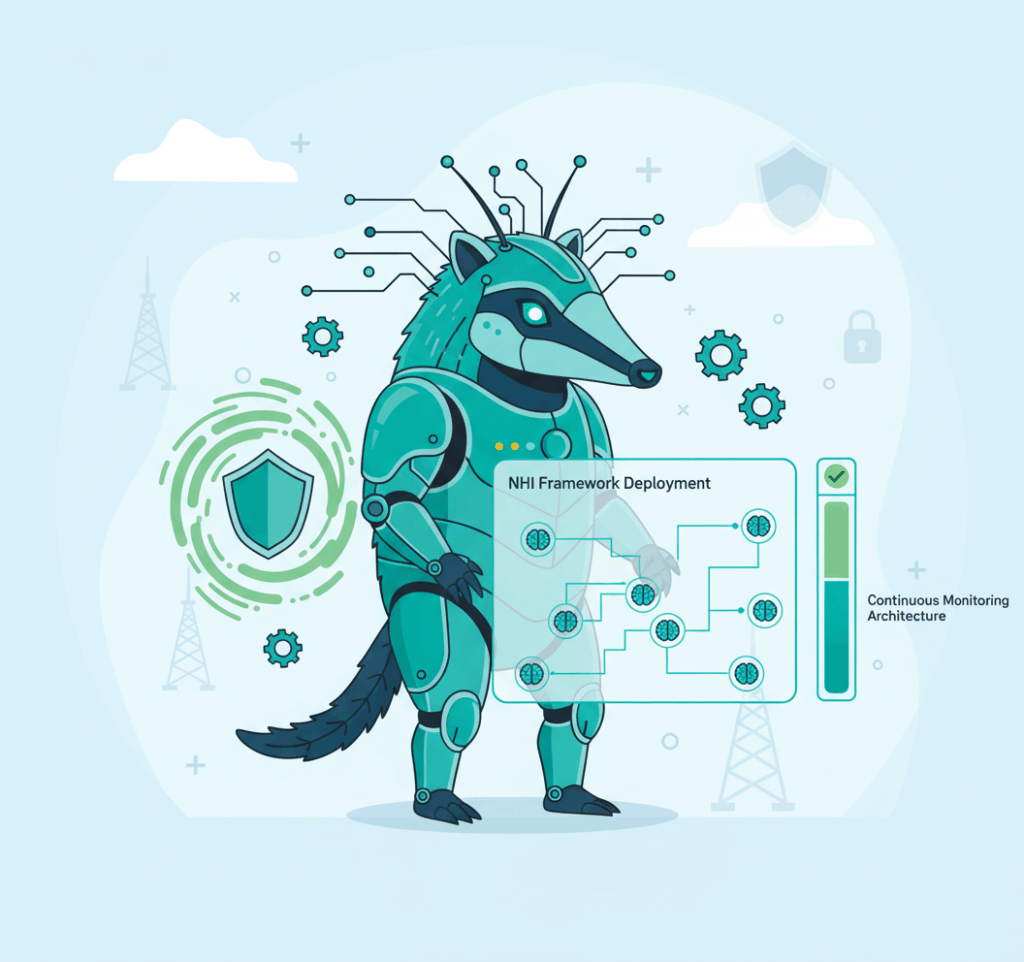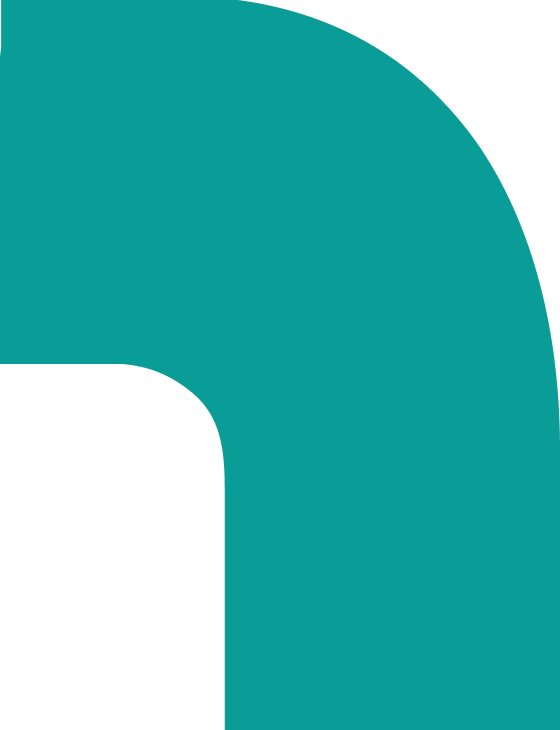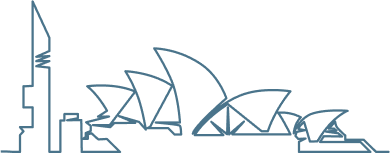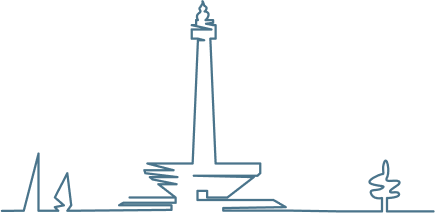On October 30, 2025, OpenAI announced Aardvark—an autonomous security researcher powered by GPT-5 that continuously discovers vulnerabilities without human intervention. This is a shift in how security teams operate. Instead of running scheduled scans, you’re deploying agents that reason about threats 24/7.
You get faster detection, reasoning-based analysis that catches novel attack vectors, and round-the-clock vulnerability scanning. But you’re also deploying sophisticated AI systems that make independent decisions about your codebase. That creates a governance challenge.
This article gives you the security frameworks, deployment patterns, and governance architectures to harness Aardvark’s capabilities whilst maintaining control. You’ll learn how to govern autonomous systems securely, integrate agents into existing security operations, and detect and respond to agent anomalies in real-time. This guide is part of our comprehensive AI agents overview, where we explore autonomous systems and their real-world applications.
What Exactly is OpenAI Aardvark and How Does It Work?
Aardvark is a GPT-5 powered autonomous security researcher—a reasoning system that operates as a background agent, running 24/7 without requiring a human operator.
Traditional static analysis tools match code patterns against predefined vulnerability databases. Aardvark reasons about code vulnerability patterns. It can infer vulnerability patterns that don’t exist in any database yet. That means it detects novel attack vectors and zero-days.
Here’s what it does: continuous code repository scanning, autonomous threat modelling, vulnerability discovery, and patch recommendations. What sets it apart is that Aardvark makes autonomous decisions and acts on them without human approval loops.
GPT-5’s larger context window lets Aardvark analyse complex codebases in their entirety—your code plus threat context plus your organisational risk posture. Findings get mapped to your actual security situation.
Use cases: scanning new pull requests before merge, proactive vulnerability discovery in legacy codebases, and threat modelling against emerging attack patterns.
OpenAI’s mature ecosystem supports complex multi-agent workflows through extensive third-party integrations—good for enterprise security operations.
How Does Aardvark’s GPT-5 Technology Differ from Rule-Based Security Tools?
Rule-based tools like Snyk and SonarQube match code patterns against predefined vulnerability databases. They’re pattern matchers. If a vulnerability isn’t in the database, it doesn’t get flagged.
GPT-5 powered Aardvark uses reasoning to infer vulnerability patterns not in any database. It detects novel attack vectors because it understands code context, threat context, and organisational risk posture together. Reasoning-based agents analyse code plus threat context plus risk.
Aardvark improves with feedback but doesn’t require manual rule updates. When a new attack pattern emerges, it reasons about whether similar patterns exist in your codebase before anyone has written a rule to detect it.
There is a limitation though. AI agents can hallucinate or make reasoning errors. This requires validation and human oversight for high-risk findings. But the shift is clear—from rule-matching to reasoning-based security analysis.
Here’s an example. Traditional tools flag a SQL query concatenating user input as SQL injection. Aardvark reasons about whether that input has already been validated, sanitised, what the data flow looks like, and whether there’s actually exploitable behaviour. Context awareness means fewer false positives and better detection of business logic vulnerabilities.
What Are the Unique Security Vulnerabilities Specific to Autonomous Agents Like Aardvark?
Autonomous agents introduce a different attack surface. Understanding how agents work autonomously is essential before deploying them securely. The vulnerabilities include prompt injection, privilege escalation, and reasoning failures.
Prompt injection is the most significant risk. Malicious code comments or commit messages could trick Aardvark into executing unintended actions or exfiltrating sensitive findings. Input validation and sanitisation are your first lines of defence.
Lateral movement is another threat. An improperly scoped agent could access repositories beyond its authorised boundaries.
Model poisoning is a concern if Aardvark learns from feedback. Adversaries could provide malicious feedback to degrade accuracy or introduce false positives at scale.
Token lifecycle vulnerabilities are straightforward. Agent credentials could be stolen, leading to unauthorised scanning. Agent tokens often have longer lifetimes and broader scopes than human credentials.
Transparency is required because compliance demands that security teams understand why Aardvark made a decision.
That’s where the Non-Human Identity framework comes in.
What is the Non-Human Identity (NHI) Framework and Why Does Aardvark Deployment Require It?
NHI is a security framework specifically designed for autonomous agents operating without human operators.
Traditional identity management was built for humans—username, password, multi-factor authentication. NHI solves a different problem. How do you grant access to an autonomous system, verify its identity, and revoke access if it misbehaves?
Here’s what’s involved: identity provisioning creates the agent identity. Credential issuance provides tokens specific to the agent. Least-privilege access scoping defines what the agent can access. Behavioural anomaly detection identifies when the agent acts outside expected patterns.
NHI determines the security boundary between what Aardvark can and cannot access. It prevents lateral movement and enables audit trails.
The CSA Agentic AI IAM Framework provides standards for NHI implementation. The NIST Cybersecurity Framework has been adapted for NHI, mapping Identify, Protect, Detect, Respond, and Recover functions to autonomous agent governance.
Implementation patterns include ephemeral token generation, access token rotation, short time-to-live credentials, and revocation procedures. Zero-trust architecture principles apply—never trust, always verify.
AI agents exhibit emergent behaviours no human anticipated, which requires dynamic authorisation using attribute-based access control and real-time policy decisions.
NHI is the access control model that makes autonomous agent deployment secure and compliant.
How Should You Scope Repository Access for an Autonomous Security Agent?
Apply least-privilege to repositories Aardvark can scan. The agent should only access repositories necessary for its mission.
Your access decision matrix varies by organisation. Startups might grant broad read access with patch recommendations only. Enterprises need tiered access by team, with auto-remediation for low-risk findings and supervisor approval for high-risk changes. Regulated industries require read-only scanning, human verification, and comprehensive audit trails.
Read-only versus execution rights is a decision point. Should Aardvark execute tests during analysis? Execution rights increase potential impact—positive and negative.
Patch recommendation versus auto-remediation is another decision. Suggesting patches is safer because humans review before commits. Auto-committing fixes is faster but riskier.
Public versus private repository boundaries prevent Aardvark from scanning dependencies or external code unintentionally. Your credential scope defines what API tokens the agent needs. Remove unused access to limit blast radius if a token is compromised.
Here’s the graduated deployment approach: start with read-only access. Mature to patch recommendations. Eventually enable auto-remediation with supervisor oversight for low-risk findings only.
Your decision criteria: security posture required by industry and compliance, risk tolerance, and availability of an incident response team.
Aardvark’s access must be explicitly scoped and continuously validated.
What Are the Core Components of an Agentic Security Deployment Checklist?
Pre-deployment: Define the NHI identity for Aardvark. Design the repository access scope. Configure credential management including token rotation and revocation. Establish incident response procedures. For comprehensive implementing NHI frameworks and secure agent deployment patterns, refer to our enterprise implementation guide.
Deployment: Provision the NHI in your identity management system. Configure access tokens with appropriate scopes. Deploy Aardvark with read-only access initially. Set up logging and audit trails. Integrate with existing security tools like your SIEM, ticketing, and incident management.
Validation: Verify Aardvark can access intended repositories. Confirm it cannot access restricted repositories. Validate the token lifecycle works—tokens should rotate, expire, and get revoked as designed. Test incident response procedures.
Monitoring setup: Analyse normal agent behaviour over 2-4 weeks to understand expected patterns. Configure anomaly detection rules based on that baseline. Set up real-time alerting. Track SLA metrics.
Ongoing operations: Quarterly access reviews ensure Aardvark only accesses what it should. Learning cycle feedback involves marking false positives and validating true positives. Model retraining prevents drift. Compliance audit trail validation maintains documentation for regulatory requirements.
Escalation paths matter. Who gets notified when something unusual happens? What automatic responses occur—throttle activity, isolate from sensitive resources, or roll back?
How Does Continuous Monitoring Architecture Detect Agent Anomalies in Real-Time?
Aardvark’s actions—repositories scanned, vulnerabilities found, tokens used—flow into your logging system, then to anomaly detection, then to metrics. For deployments involving multiple coordinated security agents, refer to our guide on orchestration security patterns to understand how to secure coordinated agent environments.
Baseline establishment comes first. What’s the scan frequency? Which repositories get accessed? What token usage patterns are normal?
Anomaly signals tell you when something’s wrong. Access to unauthorised repositories indicates lateral movement. Unusual token usage spikes suggest credential misuse. Sudden increases in findings could mean model drift or poisoning. Response time degradation might indicate system compromise.
Real-time response mechanisms prevent damage. Threshold-based alerting triggers immediate notification. Automated throttling reduces agent activity if anomalies are detected. The circuit-breaker pattern automatically disables the agent if the anomaly score exceeds a threshold—your emergency brake.
Continuous compliance monitoring provides real-time visibility into all activities. AI-powered anomaly detection enables early warnings without requiring you to manually define every possible anomaly pattern.
Your metrics dashboard should show scan frequency, repository count, finding rates, token usage, and response times. Configure alert rules for specific thresholds.
Example: Aardvark suddenly accesses 50 repositories instead of its usual 5. The monitoring system detects the anomaly, triggers an alert, throttles activity, and notifies your security team.
How Do You Measure Whether Aardvark Is Actually Improving Your Security Posture?
Define performance SLAs with specific metrics. Vulnerability detection rate measures the percentage Aardvark finds versus your baseline. False positive rate tracks findings that aren’t genuine vulnerabilities—important because false positives waste investigation time. Mean time to detection shows how fast the agent finds vulnerabilities. Coverage measures the percentage of your codebase analysed per scan.
Establish a baseline before deployment using manual review or traditional tools. Track metrics over 3-6 months.
ROI calculation: multiply vulnerabilities prevented by average cost per vulnerability, then subtract Aardvark licensing cost and operational overhead. Industry benchmarks suggest organisations save 300+ hours annually on vulnerability discovery and remediation through agent-based security.
Risk-adjusted metrics prioritise what matters. Focus on how effectively Aardvark prevents exploitation of high-severity vulnerabilities, not just total count.
Measure impact through specific SLAs and ROI calculations that demonstrate tangible security improvements.
How Do Compliance Frameworks Adapt to Autonomous Agent Deployments?
NIST Cybersecurity Framework adapted for agents: Identify what agents have access to, Protect with NHI controls, Detect through continuous monitoring, Respond with incident procedures, Recover with agent rollback.
The CSA Agentic AI IAM Framework provides specific IAM controls for non-human entities. The MAESTRO Framework applies to multi-agent scenarios. A2AS provides vendor evaluation standards. OWASP Agent Security Guidelines offer developer-friendly controls.
SOC2 Type II requires additional evidence—audit trails showing all agent decisions, access controls demonstrating proper scoping, and change management tracking configuration updates.
Continuous compliance monitoring maintains automated audit trails showing all decision-making. Organisations following NIST and ISO 27000 series find it easier to become compliant with emerging regulations.
For regulated industries—healthcare with HIPAA, finance with PCI-DSS, government with FedRAMP—additional controls include code encryption at rest, network isolation, and enhanced audit logging.
Your compliance mapping exercise: which regulatory requirements affect agent deployment, and what additional controls do you need?
FAQ
What is a Background Agent and Why Do Security Teams Care?
Background agents operate continuously without requiring a human operator. Security teams value Aardvark because it provides 24/7 vulnerability scanning without the on-call burden. This enables a shift from reactive security to proactive security through continuous threat discovery. The agent finds vulnerabilities whilst your team is asleep, on weekends, during holidays.
How Do Supervisor Agent Patterns Improve Governance of Autonomous Security Tools?
Supervisor agents monitor other agents’ behaviour, validate findings before actions are taken, and enforce governance policies. For Aardvark, a supervisor could review all patch recommendations before auto-remediation, preventing unintended changes. This addresses the “trusted autonomy” challenge through human-in-the-loop approval.
What Is Model Drift and How Does It Affect Autonomous Security Agents Like Aardvark?
Model drift occurs when an agent’s outputs degrade over time—missing vulnerabilities or generating excessive false positives. For security agents, drift impacts vulnerability detection coverage and creates gaps in your security posture. Mitigation requires feedback loops where your team marks findings as true or false positives, periodic retraining, and continuous validation of detection rates.
Can Aardvark Be Integrated with Existing CI/CD Pipelines and How?
Yes. Aardvark integrates into CI/CD as a gate that triggers automated scans on every pull request. Configure it to block merges if it finds high-severity vulnerabilities, or require human approval for merges with findings. Integration points include GitHub Actions, GitLab CI, and Jenkins. Findings feed into your existing ticketing systems like Jira and incident management platforms like PagerDuty.
What Happens If Aardvark Makes a Mistake or Recommends a Bad Fix?
Aardvark should operate in recommendation mode initially—it suggests fixes, and humans review before committing. If it produces a false positive, your security team marks it as feedback, which improves future recommendations. Mature teams can enable auto-remediation for low-risk findings once they’ve validated the agent’s accuracy. Your incident response playbook defines rollback procedures if the agent commits problematic changes.
How Do You Handle the Risk of Aardvark Being Compromised or Misused?
The risk is managed through multiple layers. NHI scoping ensures the agent can only access authorised repositories—if compromised, damage is limited. Token lifecycle management keeps credentials short-lived. Continuous monitoring detects anomalous access patterns. Circuit-breaker automation auto-disables the agent if anomalies exceed thresholds. Audit trails enable forensic analysis if compromise is suspected.
What Is the Difference Between Agent Explainability and Agent Black Box?
Explainability means Aardvark can articulate why it flagged code as vulnerable and what attack pattern it inferred. Black box means the agent produces output without explanation. Explainability is necessary because your team must understand findings before acting. You can’t fix a vulnerability effectively without understanding the attack vector. Agentic security researchers require higher explainability because their decisions directly impact your security posture.
How Should Organisations Prioritise Implementing NHI Controls Before Deploying Aardvark?
Prioritise in this order. First, identity provisioning—create the agent identity in your IAM system. Second, access scoping—define which repositories the agent can access based on least-privilege principles. Start with these two before deployment. Then layer on credential management with token provisioning and rotation. Fourth, implement comprehensive audit logging. Fifth, set up anomaly detection to catch unusual behaviour.
Is Auto-Remediation Safe or Should Fixes Always Be Manual?
Auto-remediation is safe for low-risk findings like dependency updates, with supervisor oversight. It’s risky for high-risk findings like authentication logic without human review.
Use a graduated approach. Start with recommendations only whilst you build confidence. Once you’ve validated performance over weeks or months, mature to auto-remediation for low-risk findings where the worst case is easily reversible. Eventually unlock high-risk auto-remediation only for mature security teams with strong testing, comprehensive rollback procedures, and proven incident response capabilities.
How Do You Calculate ROI for Aardvark Investment?
ROI equals vulnerabilities prevented multiplied by average cost per vulnerability, minus Aardvark licensing cost plus operational overhead. The cost per vulnerability includes the compensation cost to fix manually plus the potential incident cost if exploited.
Industry benchmarks show organisations save 300+ hours annually on vulnerability discovery and remediation through agent-based security. Payback period is typically 3-6 months for enterprises with mature CI/CD.
Calculate this specific to your context. What do your security engineers cost per hour? How many vulnerabilities do you find and fix per quarter? What would the business impact be if a critical vulnerability were exploited? For detailed frameworks on measuring security success and preventing agent failures, see our guide on ROI measurement and failure prevention.
What Happens to Aardvark When Your Codebase or Security Posture Changes?
Aardvark’s effectiveness depends on learning feedback loops that adapt to your evolving codebase. When a new vulnerability class emerges, provide feedback on findings for retraining—mark them as true positives or false positives. When your codebase architecture changes significantly—migrating to microservices, adopting new frameworks—recalibrate the baseline by re-establishing normal scan patterns and adjusting access scopes.
Quarterly reviews of agent performance and retraining cycles are recommended as a minimum. Some organisations review monthly during rapid change.
Are There Any Industries Where Aardvark Deployment Is Restricted or Higher Risk?
Aardvark access to code requires careful governance in regulated industries—healthcare with HIPAA, finance with PCI-DSS, government with FedRAMP. Deployment isn’t impossible, but you need additional controls.
Additional compliance controls include code encryption at rest, network isolation for agent operations to prevent lateral movement, and enhanced audit logging capturing every agent action with timestamps. Healthcare organisations require additional validation that the agent doesn’t inadvertently expose PHI through findings. Government agencies require vendor compliance with security requirements like CMMC.
Financial services often require agent operations within their security perimeter rather than cloud-based processing. They may also require regular penetration testing of the agent deployment to validate that the NHI framework and access controls work as designed.
The deployment is feasible in these industries, but the preparation work, compliance documentation, and ongoing validation requirements are substantially higher.
Summary
OpenAI Aardvark demonstrates that autonomous security agents are moving from research to production. The NHI framework, access scoping, continuous monitoring architecture, and compliance controls covered in this guide provide the governance foundation to deploy Aardvark safely whilst maintaining control.
Security is a cross-cutting concern in all agent deployments. Whether you’re exploring fundamentals, evaluating platforms, or planning enterprise implementation, security governance applies throughout. For a complete overview of all aspects of AI agents and autonomous systems, see our comprehensive autonomous systems guide.












